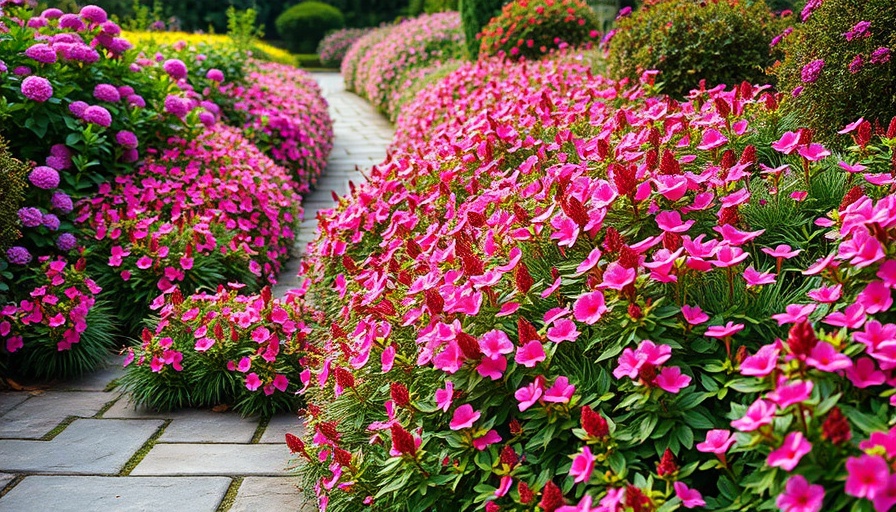
Exploring the Benefits of Ground Cover Plants
Ground cover plants are more than just a pretty addition to your garden; they are essential players in maintaining garden health and aesthetics. These low-growing perennials reduce the risk of soil erosion, suppress weed growth, and provide habitats for essential pollinators such as bees and butterflies. By making an informed choice among the various ground cover options, gardeners can design spaces that are not only beautiful but also sustainable.
Suitability for Different Environments
One of the most significant advantages of ground cover plants is their ability to thrive in diverse environmental conditions. Whether your garden lies in full sun or shaded woodland, there's a suitable cover plant for each area. Hardy plants like Chamomile and Periwinkle exhibit remarkable adaptability, able to flourish in partial shade or full sun.
Choosing the Right Ground Cover for Your Zone
USDA Hardiness Zones play a vital role in selecting the right ground covers. These zones indicate the climate conditions that different plants can tolerate. For example, if you reside in Zone 3, Hardy Geraniums may be an ideal choice as they are known to thrive in cooler temperatures. Understanding your zone ensures that you select plants that will survive and flourish year after year, minimizing maintenance efforts.
Breaking Down Popular Ground Cover Options
Many ground cover plants combine beauty and functionality. Here are a few standout options:
- Ajuga: This perennial thrives in a variety of conditions, forming a dense mat that suppresses weeds effectively.
- Mondo Grass: Known for its grassy appearance, this hardy option works well in shade and can tolerate drought.
- Blue Star Creeper: With its delicate blue flowers, it provides a colorful display while thriving in moderate to low sunlight conditions.
The Importance of Plant Spacing
When planting ground covers, spacing is vital for achieving the desired density and visual appeal. For quicker coverage, plants should be spaced closer together, ensuring that they fill in gaps quickly and effectively. Referencing tags or planting guidelines can help you to strategize your garden layout for optimal growth.
Future Predictions: A Shift Toward Sustainability
This growing interest in low-maintenance plants like ground covers aligns with a larger trend towards sustainability in gardening. As environmental awareness increases, more gardeners are looking for ways to create eco-friendly spaces that are harmonious with nature. Ground covers not only beautify landscapes but also contribute positively to local ecosystems.
Practical Tips for Ground Cover Success
To maximize the impact of your ground cover plants, consider these practical tips:
- Regular Weeding: Keep the area clear of invasive species that may compete with your chosen ground covers.
- Soil Preparation: Before planting, ensure that the soil is well-aerated and enriched to provide a solid foundation for your new plants.
- Watering Wisely: While most ground cover plants are drought-tolerant once established, sufficient watering during their initial growth phase is essential.
Get Started on Your Care-Free Garden
The key to an effortless garden lies in the thoughtful selection and placement of ground cover plants. With low maintenance and significant environmental benefits, these plants are a solid investment in creating a lush, welcoming garden. Take a step towards a sustainable garden today, and enjoy the many benefits that ground cover plants have to offer.
 Add Row
Add Row  Add
Add 




 Add Row
Add Row  Add
Add 


Write A Comment